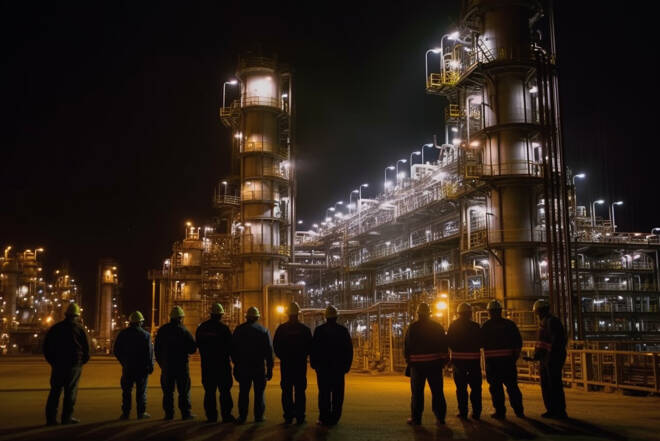Advertisement
Advertisement
Natural Gas News: Storage Glut Meets Production Drop, May Tighten Supply
By:
Key Points:
- EIA reports 24 bcf added to gas storage, doubling expectations.
- U.S. rig count drops to lowest since January 2022.
- Spot prices hit new lows in West Texas and Alberta.
Recent Trends in U.S. Natural Gas Markets
Last week, U.S. natural gas futures stabilized near two-week lows, largely due to concerns over an extensive storage surplus and forecasts for decreased demand, primarily attributed to reduced feedgas supply to the Freeport LNG export plant in Texas.
Natural gas settled at $1.770, down $0.015 or -0.84%.
EIA Storage Analysis
The U.S. Energy Information Administration (EIA) reported a significant storage build, with 24 billion cubic feet (bcf) added, vastly exceeding the expected 8-bcf based on a Reuters poll and doubling the 11-bcf addition from the same week last year. This spike in storage levels, set against a five-year average increase of 24 bcf for this time period, signals a notable shift in storage trends, underscoring the market’s volatility.
Production and Rig Count
The number of operational U.S. gas rigs has declined to 109, marking the lowest count since January 2022, according to Baker Hughes data. This reduction follows natural gas prices reaching a 3.5-year low in February and March, leading to scaled-back drilling activities. This decreased production activity is a critical factor for market participants, as it suggests potential tightening in future natural gas supply.
Spot Market Fluctuations
Significant fluctuations were observed in the spot market. Prices at the Waha hub in West Texas briefly dipped to negative $1.74 per mmBtu, reflecting intense regional oversupply. Conversely, at the AECO hub in Alberta, prices fell to $1.00 per mmBtu, the lowest since October 2022, continuing a trend of declining prices amid market oversaturation.
Supply and Demand Trends
Natural gas output in the Lower 48 U.S. states averaged 98.8 billion cubic feet per day (bcfd) in April, down from 100.8 bcfd in March. Additionally, LNG feedgas volumes decreased, with average flows to major U.S. LNG export plants reducing to 12.5 bcfd in April from 13.1 bcfd in March. This reduction is partially due to ongoing maintenance and operational issues at Freeport LNG, which significantly impact export capabilities.
Weekly Forecast
Given the current surplus in storage and diminished demand projections, coupled with reduced LNG export activities, the market outlook for the upcoming week leans bearish. However, the reduced drilling activity and potential spikes in heating demand due to colder forecasts could introduce some upward pressure on prices. Traders should anticipate continued volatility with a potential for slight price increases, particularly if production remains subdued and weather conditions drive up domestic demand. As such, a cautious but slightly bearish stance is recommended for the immediate term.
About the Author
James Hyerczykauthor
James Hyerczyk is a U.S. based seasoned technical analyst and educator with over 40 years of experience in market analysis and trading, specializing in chart patterns and price movement. He is the author of two books on technical analysis and has a background in both futures and stock markets.
Did you find this article useful?
Latest news and analysis
Advertisement
